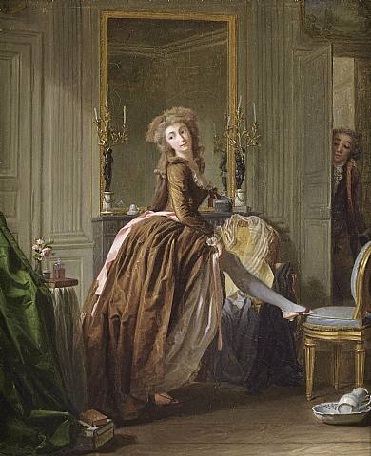 |
| Elégante à sa toilette, 1796
This post is about the basic undergarments a lady wore (and didn't wear) during the late 18th and early 19th century. Starting from the skin and working my way out.
Stockings and Garters
Panties
|
- The chemise (called a shift for most of the late Georgian and early Regency periods) was a simple, loose dress that women wore beneath a dress to prevent chaffing. It often came to the knee or mid calf. Sleeve length varied from 1/2 to 3/4 or full length, depending upon the dress worn.
- Chemises could have decorative sleeves or collars, if the wearer thought they might be seen, but first and foremost was comfort, because it was going to run against the skin all day.
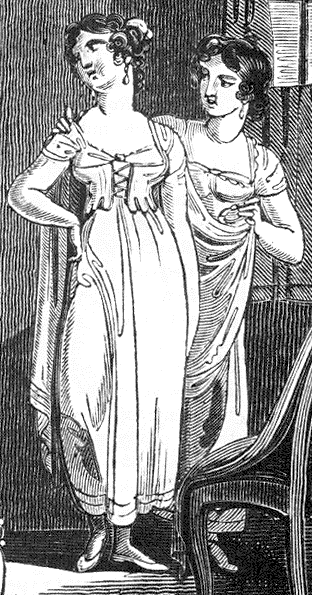
Corset
- Corsets, called stays during this time, changed greatly. Late 18th century stays were conical and rigid. They had boning that ran along the front and back to keep the posture straight, and the torso in a pleasing shape. They ranged from adorned, for stays that would be seen, to rather plain, for stays that would be beneath a stomacher.
- Whereas early 19th century stays (as seen in the shift image above) were softer and more natural, in going with the softer style of dress. They varied in length as well, from shorter and almost bra-like, to full length stays.
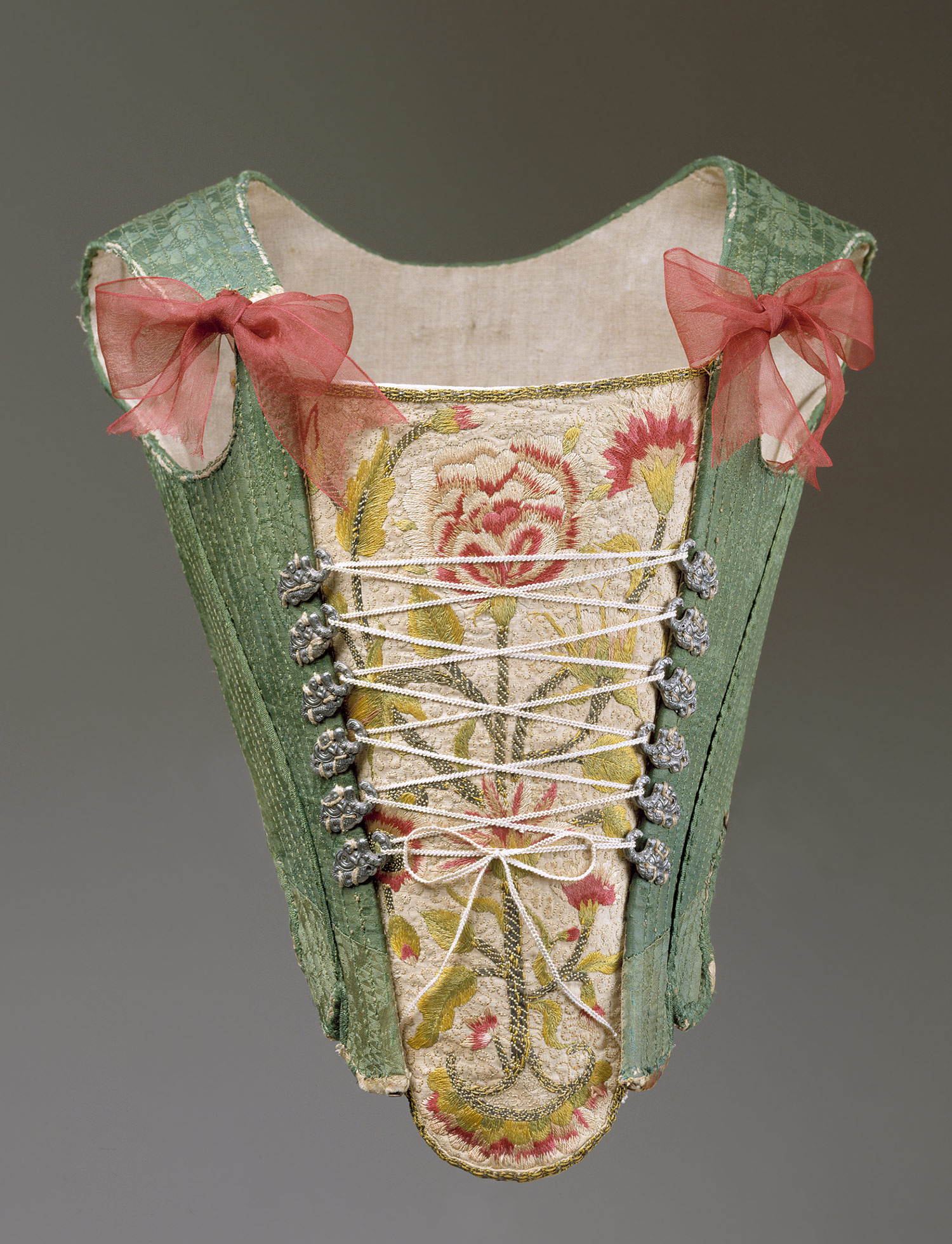
Pockets, hoops, paniers, bumrolls, ect...
- These things went in and out of fashion. Women used to wear pockets tied beneath their skirts, but these faded from use with the rise in popularity of the lithe silhouette. Soon the reticule became the popular way to hold your necessities.
- Paniers and pocket hoops, which gave the 18th century the famous I-have-hips-wide-enough-to-birth-a-elephant look tapered off toward the end of the 18th century. Bum rolls, which gave the skirts a full look, also went out of fashion as the 19th century ushered in the era of slim figures. This gave way to a petticoat or two. Women sometimes wet down the few petticoats they wore in order to show their figure to best advantage.
- In 19th century France, a few unusual fashion trends (most of which I'll blog about separately) came into use. Bare breasts and see thru clothing became popular for a time, but these trends never made it to England in any real way.
After the woman had put on all these things, she was finally ready to put on her dress. Are you as exhausted as I am?
So tell me, what parts of historical dress do you like most? Least? I'd love to hear what you think.

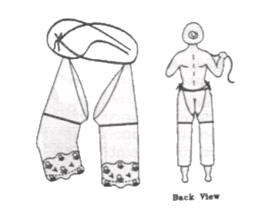

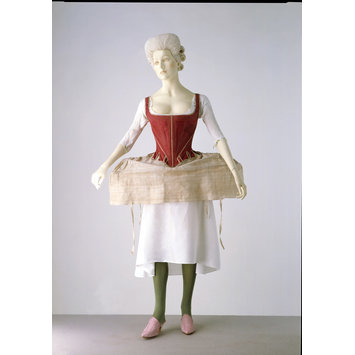
Great post, I tweeted.
ReplyDeleteThank you!
ReplyDeleteFantastic blog! Do you have any tips and hints for aspiring writers? I’m planning to start my own website soon but I’m a little lost on everything. Would you propose starting with a free platform like WordPress or go for a paid option? There are so many options out there that I’m completely overwhelmed .. Any suggestions? Many thanks!
ReplyDeletetangao